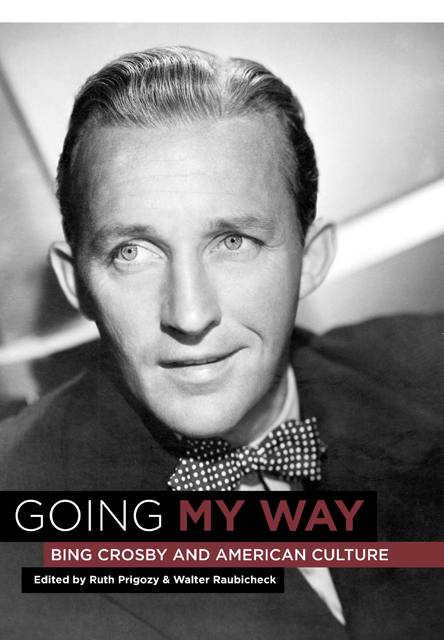Book contents
- Frontmatter
- Dedication
- Contents
- List of Illustrations
- Foreword
- Preface
- Acknowledgments
- Introduction Bing Crosby—Nothing Is What It Seems
- Part 1 Theoretical Perspectives on Crosby
- Part 2 Cultural Perspectives on Crosby
- Part 3 Historical Perspectives on Crosby
- Personal Comments
- Selected Bibliography
- List of Contributors
- Index
Foreword
Published online by Cambridge University Press: 11 March 2023
- Frontmatter
- Dedication
- Contents
- List of Illustrations
- Foreword
- Preface
- Acknowledgments
- Introduction Bing Crosby—Nothing Is What It Seems
- Part 1 Theoretical Perspectives on Crosby
- Part 2 Cultural Perspectives on Crosby
- Part 3 Historical Perspectives on Crosby
- Personal Comments
- Selected Bibliography
- List of Contributors
- Index
Summary
The statistics on Bing Crosby's career are dazzling and extremely revealing regarding his success and influence on the many millions whose lives he affected. He created a legacy that is unequalled in its scope and achievement, yet is obscure by today's standards. It is puzzling to think that his image has diminished in popular memory to that of being the singer of “White Christmas” and little else. As an ardent fan of his recorded works, ranging from the earliest to the last, and as an admirer of his filmography and acting prowess, I never lose hope that he will be re-discovered by future generations. The gift of modern technology lies in our ability to reach many people who might not otherwise have access to a particular record or film performance, but might very well discover either one by surfing the Internet. What Bing Crosby achieved is so singular and unique that it simply has to live on. Like a multitude of other forgotten stars, Bing's time will again come. This belief is not proffered in a Pollyanna fashion but is borne out of the belief that what is good will survive and what is not, will not.
Some have surmised that Crosby's recordings are not as popular today as Sinatra's because of their technical limitations, having been recorded decades before modern sound engineering was perfected. If Crosby had been in his prime during the fifties, perhaps his recordings would be regarded in the same way that the fifties output of Sinatra is accepted: as the hallmark of his work and technically quite acceptable. As it stands, Crosby in the fifties was affected by changing times and an attempt to blandly compete with Sinatra, the result diminishing his reputation. He cared deeply about having hit records and the fifties were an increasingly tough time for him artistically, even though he succeeded in making some fine recordings in that decade.
- Type
- Chapter
- Information
- Going My WayBing Crosby and American Culture, pp. xiii - xivPublisher: Boydell & BrewerPrint publication year: 2007



